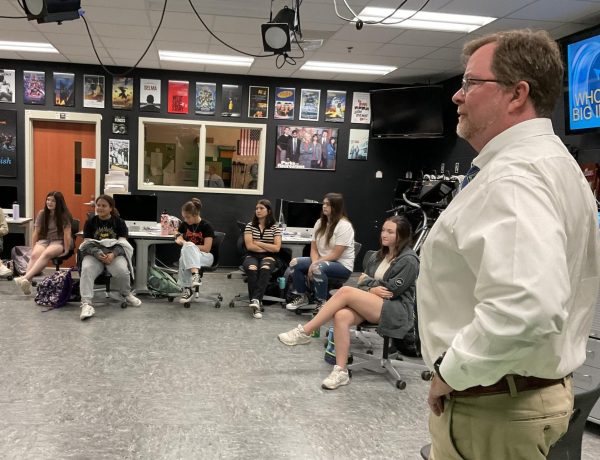Where Does the Blood go?
Every two seconds, another person in the U.S. needs blood. And since artificial blood has yet to be created, that means that every day– every day— 41,000 people nationwide need to give blood to save millions of lives.
“I give blood because it’s something easy I can do personally that will directly help someone else,” said FCHS senior Cara Wissinger who has donated blood at high school blood drives. “Other people should give [blood] because we pretty much have so much blood that we don’t need…why not give that to someone who does need it?”
Some people can’t donate blood due to age, illness, or other factors. For example, after going on a missions trip to Haiti, Wissinger can’t donate again until next July. In order to keep the blood supply pure, blood centers won’t accept blood from people who have been to malaria-infested countries for two years after they return.
Since the pool of available donors is limited, it is even more important for healthy people to do so. Can you give blood? You must be at least 17 years of age (or 16 with parental consent), weigh at least 110 lbs, and be in good general health. You can give whole blood every 56 days, platelets every seven days, and plasma every 28 days.
Ever wonder exactly where the blood goes? Is it sent directly to a hospital to be immediately transfused to a sick patient? Or is it sent into storage with huge vats of blood? The American Red Cross breaks their blood process into five steps:
Step 1
– About one pint of blood (which can save up to three lives) and several small test tubes are drawn from the donor
– The bag and test tubes along with the donor’s information are labeled with identical barcodes to keep track of them along their journey
– The bag and test tubes are then placed into an ice cooler and transported to a blood center
Step 2
– Spun in a centrifuge, the blood is separated into transfusable components – red cells, platelets, and plasma (which can be used for different patients and different needs)
Step 3
– The blood is received at a Red Cross national testing lab where a dozen tests are performed on it to identify the blood type and test for infectious diseases
– If a test is positive for infectious disease, the unit is discarded and the donor is notified. (According to the Red Cross, “test results are confidential and are only shared with the donor, except as may be required by law.”)
Step 4
– Platelets are stored for up to 5 days
– Red cells are stored for up to 42 days
– Plasma is stored in a freezer for up to one year
Step 5
– The blood is available to be shipped to hospitals 24 hours a day, 7 days a week.
A little bit of your time could save even the smallest of lives. “Because of a rare form of anemia that my 3 year old son has, he needs blood transfusions every two to three weeks in order to survive,” said Marisol Quintero, the mother of UCLA patient John-Paul Quintero. “So I urge you… make that call, make the time and donate blood. It doesn’t cost a thing and it’s worth more than all the money in the world – It’s the gift of life and you can give it,” she said.
To give blood, contact the Charlottesville Donor Center for an appointment at 800-989-4438. Or you can take advantage at one of these upcoming blood drives in Fluvanna:
September 20 – 10am – 3pm – Mt Zion Baptist Church, New Canton, Virginia
September 28 – 12pm – 4pm – Lake Chiropractic (near Food Lion in Palmyra)
November 12 – Health Nutz in Palmyra





